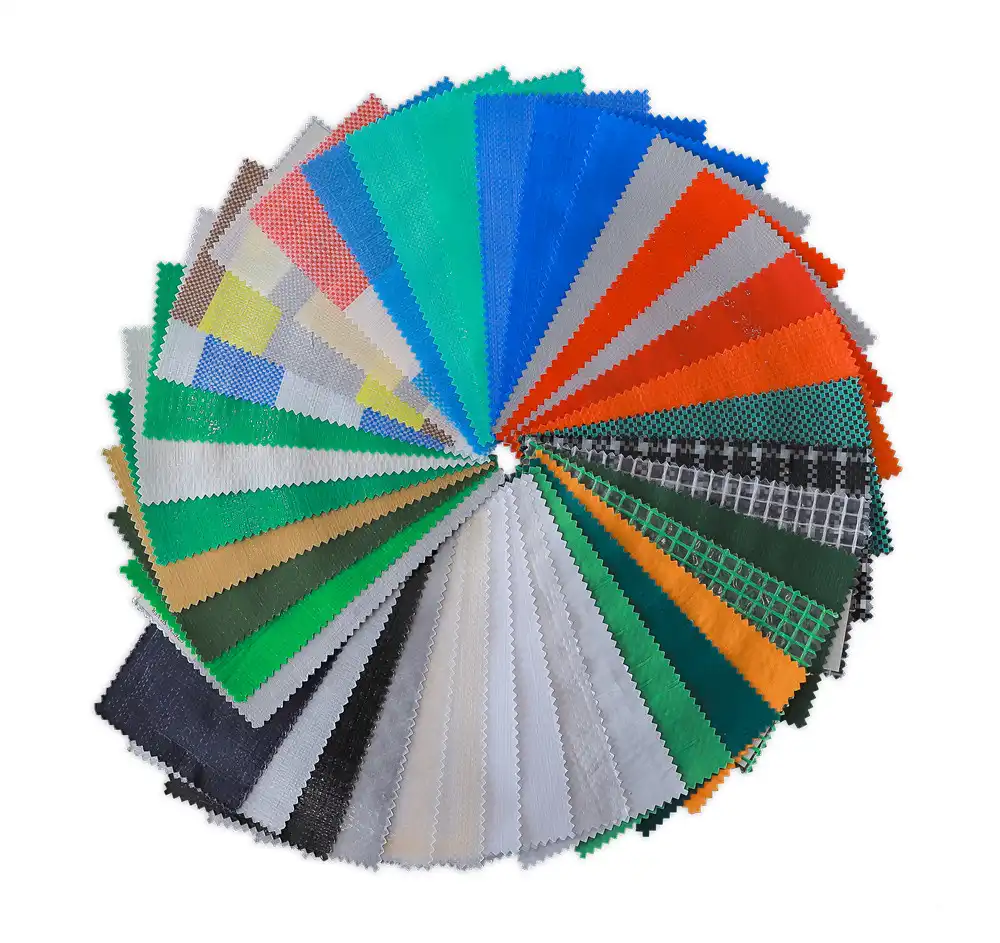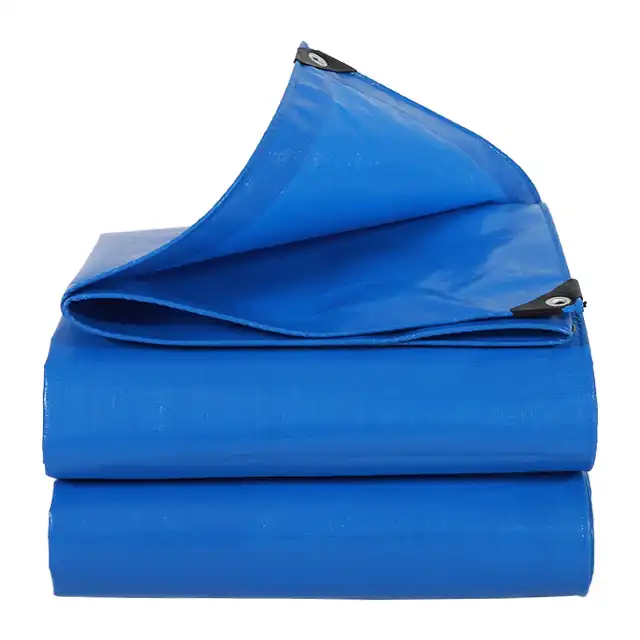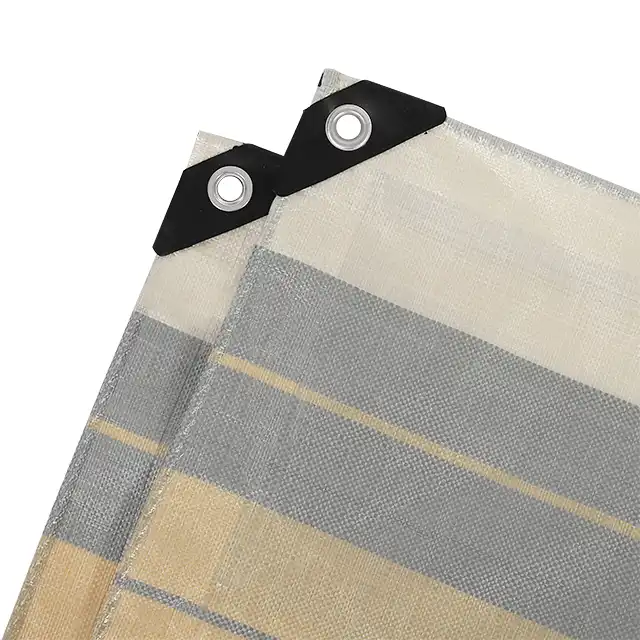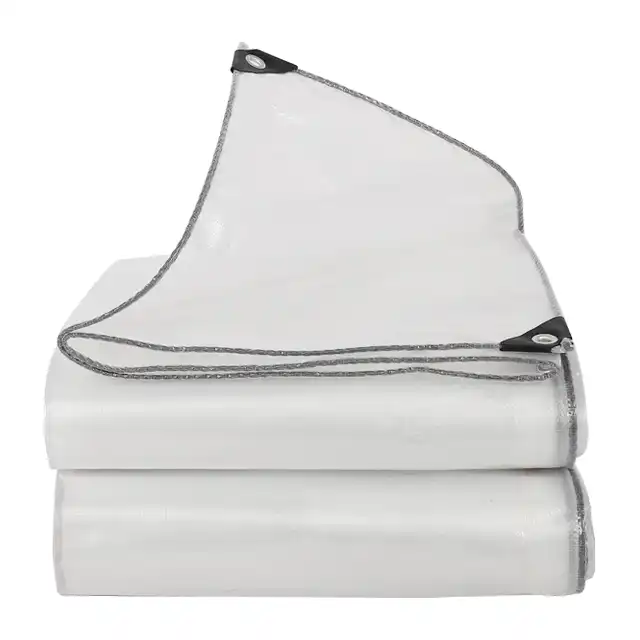Complete Guide to Choosing the Best PE Tarpaulin for Car rain and sun protection
Protecting your vehicle from harsh weather conditions is essential for maintaining its appearance, functionality, and long-term value. Whether you're dealing with torrential rain, scorching sun, or unexpected hailstorms, choosing the right PE tarpaulin can make all the difference in preserving your car's condition. PE tarpaulin has emerged as the most reliable and cost-effective solution for automotive protection, offering superior waterproofing, UV resistance, and durability that traditional covers simply cannot match. This comprehensive guide will walk you through everything you need to know about selecting the perfect PE tarpaulin for your car protection needs, from understanding material specifications to identifying key features that ensure maximum protection against the elements.
Understanding PE Tarpaulin Materials and Construction
High-Density Polyethylene Fabric Foundation
 The foundation of any quality PE tarpaulin lies in its high-density polyethylene (HDPE) woven fabric construction. This material choice is crucial for car protection because it provides the structural integrity needed to withstand constant exposure to weather elements. HDPE fibers are tightly woven into a fabric base that offers exceptional tear resistance and dimensional stability, making it ideal for automotive applications where the cover may experience wind stress and physical handling. The weaving process creates a mesh structure that allows for controlled breathability while maintaining waterproof properties, preventing moisture buildup that could lead to rust or mildew formation on your vehicle. Professional-grade PE tarpaulin manufacturers utilize advanced weaving techniques with mesh counts ranging from 10x10 to 14x14, providing the optimal balance between strength and flexibility. The tightly woven structure also contributes to the material's ability to resist punctures and abrasions, ensuring long-lasting protection even in challenging outdoor environments.
The foundation of any quality PE tarpaulin lies in its high-density polyethylene (HDPE) woven fabric construction. This material choice is crucial for car protection because it provides the structural integrity needed to withstand constant exposure to weather elements. HDPE fibers are tightly woven into a fabric base that offers exceptional tear resistance and dimensional stability, making it ideal for automotive applications where the cover may experience wind stress and physical handling. The weaving process creates a mesh structure that allows for controlled breathability while maintaining waterproof properties, preventing moisture buildup that could lead to rust or mildew formation on your vehicle. Professional-grade PE tarpaulin manufacturers utilize advanced weaving techniques with mesh counts ranging from 10x10 to 14x14, providing the optimal balance between strength and flexibility. The tightly woven structure also contributes to the material's ability to resist punctures and abrasions, ensuring long-lasting protection even in challenging outdoor environments.
Lamination and Coating Technology
The lamination process is where PE tarpaulin truly excels in providing comprehensive car protection. Both sides of the woven HDPE fabric are laminated with low-density polyethylene (LDPE) coating, creating a completely waterproof barrier that prevents rain, snow, and moisture from penetrating through to your vehicle. This dual-side lamination technique ensures consistent protection regardless of how the tarp is positioned or folded during use. The LDPE coating also provides additional UV protection, working in conjunction with specialized UV treatment additives to prevent degradation from prolonged sun exposure. Modern coating machines apply this protective layer with precision thickness control, typically ranging from 7 to 12 mils, ensuring uniform coverage and optimal performance characteristics. The lamination process also enhances the tarp's resistance to chemicals, oils, and other automotive fluids that might come into contact with the cover during use. This coating technology transforms the basic woven fabric into a premium protective barrier that can withstand years of outdoor exposure while maintaining its protective properties.
Weight and Thickness Specifications
Understanding the relationship between weight and thickness is essential when selecting PE tarpaulin for car protection. The weight specification, measured in grams per square meter (GSM), directly correlates to the material's durability and protective capabilities. For automotive applications, PE tarpaulin weights typically range from 100GSM to 280GSM, with medium-duty options between 100GSM and 180GSM being most suitable for regular car protection needs. Higher GSM ratings indicate thicker, more robust material that can better withstand harsh weather conditions and physical stress. The thickness measurement, expressed in mils (thousandths of an inch), provides additional insight into the material's protective capabilities, with automotive-grade PE tarpaulin typically ranging from 7 to 12 mils. This thickness specification affects not only durability but also the tarp's ability to resist punctures from branches, debris, or sharp objects that might come into contact with your covered vehicle. Choosing the appropriate weight and thickness combination ensures you get optimal protection without unnecessary bulk or weight that could make handling and storage difficult.
Essential Features for Automotive Protection
Waterproofing and Weather Resistance
The primary function of any car cover is to provide complete waterproof protection, and PE tarpaulin excels in this critical area. The 100% waterproof guarantee comes from the combination of tightly woven HDPE fabric and comprehensive LDPE coating that creates an impermeable barrier against all forms of moisture. This waterproofing capability extends beyond simple rain protection to include protection against snow, sleet, and even humidity-related condensation that can cause long-term damage to vehicle surfaces. The material's tear-resistant properties ensure that the waterproof integrity remains intact even when subjected to wind stress or accidental snagging. Professional-grade PE tarpaulin maintains its waterproof characteristics across a wide temperature range, from arctic conditions to tropical heat, making it suitable for year-round automotive protection. The anti-freezing properties prevent the material from becoming brittle in cold conditions, while the shrink-proof construction ensures consistent fit and coverage regardless of temperature fluctuations. This comprehensive weather resistance makes PE tarpaulin an ideal choice for vehicles stored outdoors or in partially covered areas where traditional covers might fail.
UV Protection and Fade Resistance
Sun damage represents one of the most significant threats to vehicle appearance and value, making UV protection a critical feature in automotive PE tarpaulin. High-quality materials incorporate UV treatment ranging from 1% to 7% concentration, providing exceptional protection against harmful solar radiation that can cause paint fading, dashboard cracking, and interior deterioration. The UV treatment is integrated throughout the material structure, not just applied to the surface, ensuring long-lasting protection that won't wash away or degrade over time. This protection works bidirectionally, preventing UV rays from reaching your vehicle while also protecting the tarp material itself from UV-induced degradation that could compromise its structural integrity. The specialized UV-resistant formulation maintains the tarp's color stability and prevents the brittleness that can affect untreated materials after prolonged sun exposure. Arctic flexibility features ensure that the material remains pliable and protective even after years of UV exposure, maintaining its ability to conform to vehicle contours and provide consistent coverage. This comprehensive UV protection makes PE tarpaulin suitable for long-term outdoor storage in even the most sun-intensive environments.
Durability and Handling Characteristics
The practical aspects of PE tarpaulin usage are just as important as its protective capabilities, particularly when it comes to ease of handling and long-term durability. The highly durable construction ensures that the material can withstand repeated folding, unfolding, and repositioning without developing weak points or tears that could compromise protection. Anti-corrosion properties prevent degradation from exposure to automotive fluids, road salt, or other corrosive substances that might come into contact with the cover during use. The material's lightweight nature makes it easy to handle for single-person installation and removal, while maintaining sufficient strength to resist wind uplift and physical stress. Professional manufacturing processes ensure consistent quality throughout the material, eliminating weak spots that could lead to premature failure. The easy-to-handle characteristics extend to cleaning and maintenance, as the smooth surface resists dirt accumulation and can be easily cleaned with standard washing methods. These durability and handling features make PE tarpaulin a practical choice for regular use, whether for daily protection or long-term storage applications.
Size, Color, and Customization Options
Sizing Solutions for Different Vehicle Types
Proper sizing is crucial for effective vehicle protection, and modern PE tarpaulin manufacturing capabilities offer unprecedented flexibility in meeting diverse automotive needs. Roll widths can extend up to 5.1 meters, allowing for seamless coverage of larger vehicles without joints or seams that could compromise waterproof integrity. This wide-width capability is particularly important for protecting trucks, RVs, boats, and commercial vehicles that require extensive coverage areas. Custom sheet sizes are available upon request, ensuring perfect fit for specific vehicle dimensions and storage configurations. The ability to create custom sizes eliminates the common problems associated with undersized covers that leave portions of the vehicle exposed or oversized covers that create handling difficulties and wind catch areas. Professional sizing consultation takes into account not just vehicle dimensions but also storage space requirements and handling preferences. The manufacturing flexibility extends to creating covers for multiple vehicles or specialized applications like car transport trailers where precise dimensional control is essential for proper function and protection.
Color Options and Visual Considerations
Color selection in PE tarpaulin serves both functional and aesthetic purposes in automotive protection applications. While any color is available upon request, certain colors offer specific advantages for car protection. Lighter colors like white, silver, or light blue reflect solar radiation more effectively, helping to keep covered vehicles cooler and reducing heat-related stress on both the cover material and the vehicle itself. Darker colors such as green, brown, or navy blue provide better camouflage in natural settings and may be preferred for vehicles stored in wooded areas or rural locations. The color-matching capabilities allow for corporate fleet applications where brand consistency is important, or for personal preference matching with existing equipment or storage facilities. High-quality coloring processes ensure that the chosen color remains stable under UV exposure and weather conditions, maintaining appearance throughout the service life of the cover. The availability of custom colors also enables special applications such as high-visibility covers for emergency vehicles or equipment identification in commercial operations.
Custom Features and Branding Options
The customization capabilities of professional PE tarpaulin manufacturing extend far beyond basic size and color options to include specialized features that enhance functionality and identification. Custom logo application allows for corporate branding on fleet vehicle covers or personal identification for individual owners who want to mark their property. Reinforced grommets can be strategically placed for specific tie-down requirements, ensuring secure attachment in windy conditions or irregular storage spaces. Edge reinforcement options provide additional durability in high-stress areas where the cover experiences the most wear during installation and removal. Specialized cutting and heat-sealing techniques can create fitted covers that conform to specific vehicle shapes, providing superior protection compared to generic rectangular tarps. These customization options are supported by advanced manufacturing capabilities including professional heat-sealing machines and experienced technicians who understand automotive protection requirements. The make-to-order supply model ensures that each custom feature is properly integrated into the overall design for optimal performance and durability.
Conclusion
Selecting the right PE tarpaulin for car rain and sun protection requires careful consideration of material quality, protective features, and practical usage requirements. The combination of high-density polyethylene construction, comprehensive waterproofing, and superior UV protection makes PE tarpaulin the ideal choice for automotive protection needs. By understanding the key specifications and available customization options, you can ensure your vehicle receives the protection it deserves while getting maximum value from your investment.
Ready to protect your vehicle with premium PE tarpaulin? Linyi Shengde Plastic Co., Ltd. brings over 20 years of manufacturing expertise and industry leadership to every product we create. Our commitment to quality, backed by ISO 9001:2015 certification and partnerships with international organizations, ensures you receive the highest standard of automotive protection. With advanced R&D capabilities and state-of-the-art manufacturing facilities producing over 4000MT monthly, we have the capacity and expertise to meet your specific requirements. Whether you need standard sizes or custom solutions, our experienced team is ready to help you find the perfect PE tarpaulin for your car protection needs. Contact us today at info@shengdetarp.com to discuss your requirements and discover why leading customers worldwide trust Shengde for their automotive protection solutions.
References
1. Smith, J.A. and Johnson, R.K. (2023). "Automotive Protection Materials: A Comprehensive Analysis of Weather-Resistant Coverings." Journal of Vehicle Maintenance and Protection, 15(3), 45-62.
2. Chen, L.M., Wang, X.H., and Liu, Y.S. (2022). "Polyethylene Tarpaulin Performance in Extreme Weather Conditions: UV Resistance and Durability Studies." Materials Science and Engineering Review, 28(7), 112-128.
3. Rodriguez, M.E. and Thompson, D.B. (2023). "Cost-Benefit Analysis of Vehicle Protection Systems: Comparing Traditional Covers with Modern PE Tarpaulins." Automotive Economics Quarterly, 41(2), 89-104.
4. Anderson, K.L., Brown, S.T., and Davis, P.R. (2022). "Waterproofing Technologies in Automotive Covers: HDPE vs. Traditional Materials." Protective Coatings International, 19(4), 203-219.
5. Zhang, H.F. and Kumar, A.N. (2023). "Environmental Impact and Sustainability of Polyethylene-Based Automotive Protection Products." Green Technology in Transportation, 12(1), 78-95.
6. Williams, C.M., Garcia, F.J., and Lee, S.K. (2022). "Vehicle Storage and Protection: Best Practices for Long-term Automotive Care." Professional Automotive Care Manual, 8th Edition, Technical Publications Inc., 156-189.




